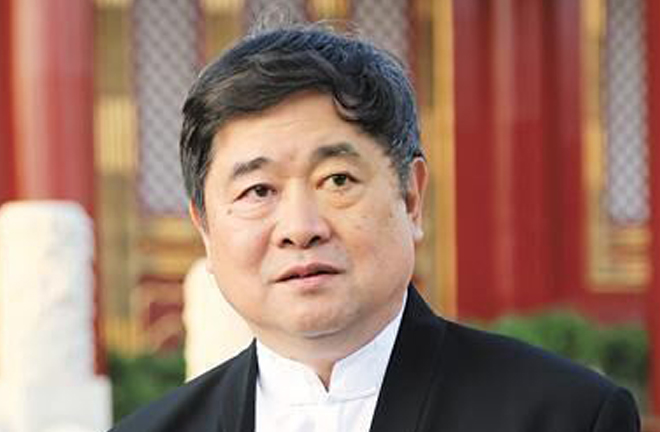SHAN JIXIANG: Stories of Palace Museum reflect refined Chinese traditional culture
 As the 19th CPC National Congress report states, “without full confidence in our culture, without a rich and prosperous culture, the Chinese nation willnot be able to rejuvenate itself,” the importance of cultural confidence has been elevated to a new level. From the perspective of cultural resources, historical circumstances and realistic ability, it is the best time for the Chinese nation to rejuvenate its culture.
As the 19th CPC National Congress report states, “without full confidence in our culture, without a rich and prosperous culture, the Chinese nation willnot be able to rejuvenate itself,” the importance of cultural confidence has been elevated to a new level. From the perspective of cultural resources, historical circumstances and realistic ability, it is the best time for the Chinese nation to rejuvenate its culture.
To me, cultural rejuvenation is a vital aspect of the great rejuvenation of the Chinese nation. Rooted in the vast historical soil of the Chinese nation, which has a time-honored history of more than 5,000 years, Chinese culture has every reason to seek revival.
Such a long-spanning historical culture can be corroborated in the various cultural relics housed in the Palace Museum. There are archaic imperial palaces that are nearly 600 years old in the Forbidden City, and as many as 24 emperors of the Ming and Qing dynasties had once lived there. They are the sites of numerous major events throughout Chinese political, economic, cultural and social history. All these elements make the Palace Museum one of China’s most valuable cultural relic sites that receive the highest level of protection in China. It is also among the country’s first batch of cultural heritage sites that were inscribed in the UNESCO World Heritage Sites.
The Palace Museum has undergone 93 years of development from its establishment in 1925 until the present day. With more than 16 million visitors annually, it is the only museum in the world to surpass 10 million yearly visitors. Complexity and ordeal thus exist in terms of the tasks to ensure the visiting orders, the security of buildings, safety surveillance and fire control.
Since the 18th CPC National Congress, General Secretary of CPC Central Committee Xi Jinping reiterated the development concepts of culture on many important domestic and international occasions such as that “it is high time to systematically review and sort out the traditional cultural resources and make the relics housed in palaces, the heritage exhibited on the vast land, and the characters written in the ancient classics alive.”
For the museums, to make cultural relics alive, they need to look upon themselves and constantly tap the cultural connotations within the relics. The aim is to allow cultural heritage resource make contributions to people’s real life in a larger sense and attract more visitors into the museums for memorable cultural experience.
In recent years, the Palace Museum has adopted the visitor-centered approach. By means of the projects targeted at its overall restoration and protection and the For a Safe Palace Museum project (a project that aims to eliminate the potential safety hazards to the collections and facilities inside the museum), the Palace Museum is striving to guarantee the safety of itself and the visitors. Transforming from quantitative growth to qualitative improvement in regard to hosting a variety of exhibitions, education projects and creative cultural activities, the Palace Museum is displaying more splendid and diverse intellectual food to strike a chord with the general public. Through hosting the World Ancient Civilization Protection Forum and promoting various international cooperation programs, the Palace Museum is bolstering the international communication and amplifying the Chinese voice in the international arena of relics in the form of recounting the Palace Museum’s stories.
The rich and colorful cultural exhibition programs of the Palace Museum are also going abroad, entering such foreign countries as Malta, Singapore, Thailand and Australia.
In the future, the Palace Museum will continue to deepen the application of digital technology, multimedia technology and internet technology to offer a more convenient means of transmitting the museum’s information to places across the world, such as that concerning the renovation and protection of the old buildings, the maintenance of relic collections and their exhibitions, creative cultural products, and comprehensive curriculums of practice and application, as well as research of the application of VR technology.
On the one hand, housing a single type of artifact or culture in a museum signifies their high historical and cultural status. On the other hand, it is possible that they will sink into oblivion or even be forgotten by people. To cater to the general public—especially to allow the young people to experience the forgotten history and interpret the classical culture—a vivid, plain and accessible way of expression is needed. What we are now trying to do is effectively align the cultural elements and resources of the Palace Museum with the lifestyles, tastes and the needs of Chinese people today.
Shan Jixiang is the curator of the Palace Museum.
(edited by BAI LE)
